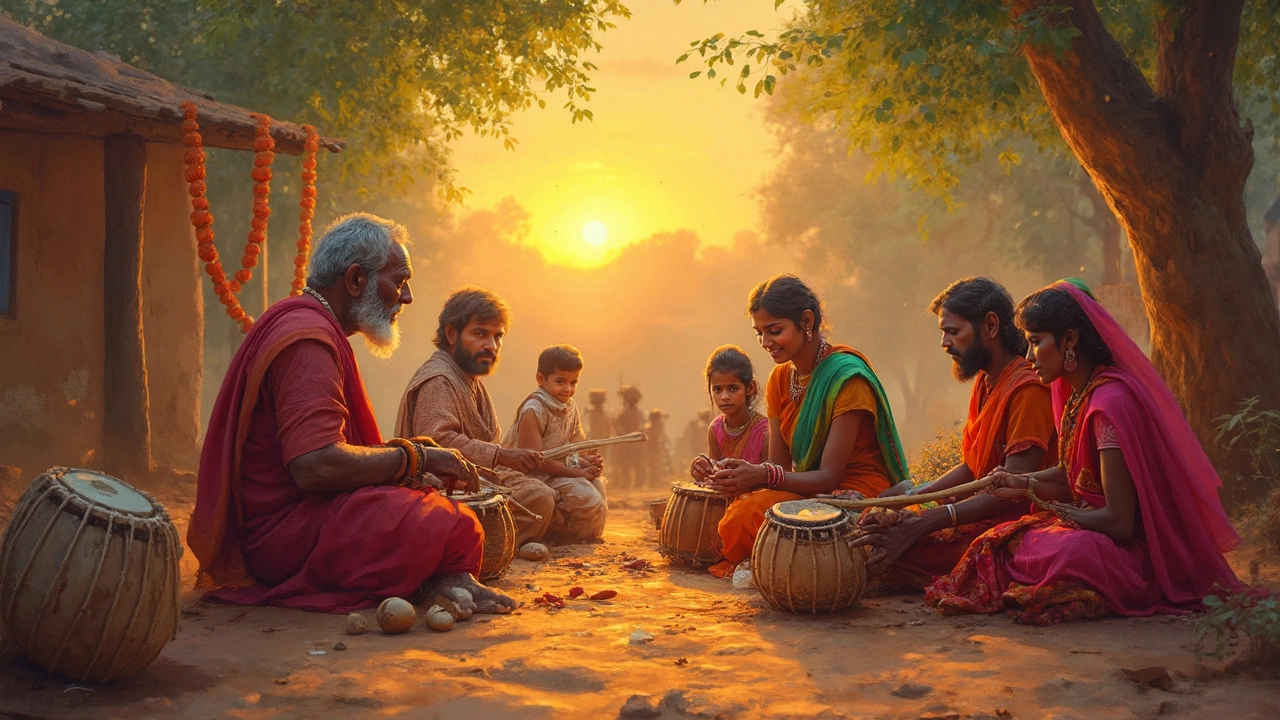
Oldest Folk Music in India: Ancient Traditions, Stories, and Sounds
Travel back to India's ancient roots. Discover the oldest folk music, its origins, stories, and timeless tunes still echoing in villages and celebrations.
Ever wonder where Indian music really began? It didn’t pop up overnight. It grew from the same rituals and stories that shaped early Indian life. In this guide you’ll get the basics – why it mattered, what tools were used, and how it still echoes in today’s songs.
Long before the first sitar string was plucked, priests in the Vedic period (around 1500‑500 BCE) sang sacred chants called Samans. These weren’t just prayers; they were the first known music pieces in India. The chants followed strict pitch patterns called śruti, which later turned into the idea of notes in Indian classical music.
Another big step came with the Natya Shastra, an ancient text on drama and music written by Bharata Muni. It listed 22 srutis (micro‑tones) and described how emotions could be evoked through sound. This is where the concept of raga – a melodic framework – started to form.
These early ideas set the stage for the two big classical traditions you hear about today: Hindustani (North) and Carnatic (South). Both trace their roots back to those Vedic chants, even though they split into distinct styles over time.
Ancient musicians didn’t have electric guitars, but they had a rich toolbox. The veena is probably the most famous – a string instrument with a hollow body and several strings that you pluck or slide. Its shape changed over centuries, but its role as a lead melody instrument stayed the same.
Wind players used the bansuri, a bamboo flute that still appears in film songs today. Its simple design lets players bend notes easily, which is perfect for the sliding tones of Indian ragas.
Percussion was just as important. The mridangam (South) and tabla (North) provided the complex rhythmic cycles called tala. These cycles can be as short as four beats or stretch to 16, and they give the music its unmistakable groove.
Other ancient instruments include the shankha (conch shell) used in temples, the sarangi with its deep, voice‑like tone, and the pakhawaj, an early barrel drum that predates the tabla.
All these tools were built to match the vocal style that started with Vedic chants – flexible, expressive, and tied to specific emotions.
Fast forward to modern times: you’ll still hear those ancient patterns in Bollywood songs, fusion jams, and even yoga class playlists. Musicians often start their training with ancient ragas and tala cycles before adding contemporary twists.
Many festivals across India celebrate this heritage. For example, the Tyagaraja Aradhana in South India gathers thousands of singers to perform classic Carnatic pieces, staying true to the centuries‑old structures.
Online platforms also help preserve old recordings of maestros like Ravi Shankar or M.S. Subbulakshmi, giving new listeners a chance to hear how ancient concepts sound today.
So whether you’re humming a simple Sa Re Ga Ma in school or jamming with friends, you’re part of a tradition that’s over 3,000 years old. The next time you hear a flute or a tabla, think about the Vedic priests who first sang those notes – the link is real and exciting.
Understanding ancient Indian music isn’t about memorizing jargon; it’s about feeling the connection between old chants and the beats you love now. Keep listening, explore a new instrument, or try a basic raga on your phone. You’ll discover how a melody from the past can still move you today.

Travel back to India's ancient roots. Discover the oldest folk music, its origins, stories, and timeless tunes still echoing in villages and celebrations.